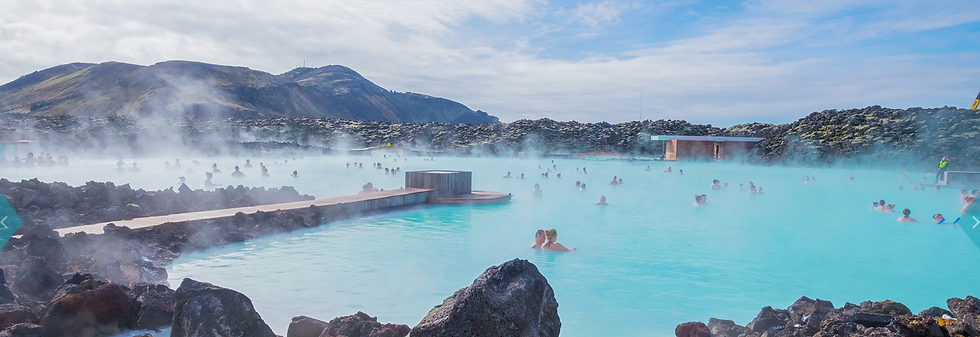Iceland: The land of the little people
- Carolyn Santos Neves
- Nov 23, 2021
- 3 min read
“Do you believe in elves?” I ask Saevar, our butch Viking tour guide. “Of course,” he replies. “Everyone in Iceland believes in elves. Why wouldn’t I?”
Everybody in our 4WD Jeep smiles.
“Have you ever seen an elf?” I persist. “Of course. Many times! My cat is called alfar (meaning elf!).” His mischievous Icelandic lilt lambastes my cynical English line of questioning. Everybody laughs.
Eighty percent of Icelanders admit to believing in elves. In fact, in surveys, few Icelanders rule out the existence of elves, dwarfs, trolls, light-fairies, and especially “hidden folk,” gregarious, human-like creatures that purportedly dwell in rocks.
Elves, known for festive clothes and demeanours, nevertheless cherish their privacy. Dwarfs, more moody than elves, are the size of human toddlers.
Light-fairies – think Tinkerbell – glow and possess flight. Trolls, reportedly not the brightest giants in the otherworld, live like hermits inside mountains and glaciers.
We head towards Thingvellir National park. Harrumph! A grown man believing in elves – absurd!

From Reykjavik, Iceland’s capital city in the south-eastern corner of this temperate, lunar landscape, it’s a two-hour drive to the rift valley at Thingvellir. This being the far north, the first two hours of our trip is in pitch darkness. But daylight unfolds quickly enough to vaguely illuminate the wondrous drive across some of Iceland’s natural wonders, geology and history. Icelandic horses, mile upon mile of virgin snow and yes, sheep. Hundreds of sheep.
“During the building of this network of high roads the roads administration called in a medium to negotiate with irate elves who had objected to the plans,” says our four wheel drive fountain-of-all-Icelandic-knowledge guide, who has lived in Iceland all his life largely thanks to his love of nature.
Apparently the perturbed pixies threatened to sabotage the project. The medium convened two séances, which led to a compromise: bureaucrats eschewed explosives and the elves withdrew their opposition.
With a head thumping after three hours sleep and too much Viking beer last night, our bone rattling Super Jeep judders, skids and swerves.
Reykjavik is Iceland’s answer to Ibiza. The nightlife doesn’t kick off till 11pm and nobody goes home before 5am. For an idyllic, historic fishing town Reykjavik rocks. We had frequented a clutch of mobbed bars and pubs, which pass for the pre-club scene warm up. Through one door we sampled the cockle-warming 40% proof Icelandic schnapps. But thankfully passed on the spicy vodka shots before heading off to Nelly’s Bar to see if Icelandic hospitality was as good as they say. We weren’t disappointed.
Signs of elf kingdom are all around. From the black knobbly lava fields that cover 10% of the country, to the glaciers which carved their way through the landscape during the Ice Age, leaving cotton-wool topped, pointy-hat mountains in their wake. It feels like I’ve landed on the moon – so much so, in fact, that NASA sends its trainee astronauts here to get a pre-flight feel for the lunar terrain.
Winter is a good time to visit Iceland. Freezing conditions and short days (it gets light at 10am and is usually dark by 4pm) ensure popular tours like the ‘Golden Circle’ – including Pingvellir, the magnificent two-storey waterfall at Gullfoss and the spewing geothermal springs of Geysir and neighbour Strokkur – are uncluttered by busloads of enthused tourists.
Pilled in our wonder Jeep shivering (after standing camera finger-poised for a defiant 15 minutes in driving rain waiting for Geysir to blow) but high spirited and with frequent shouts of “Can you turn the heating up?” from the back seat we had Pingvellir in all its wonder practically to ourselves.
These snow entrenched plains lie directly on top of the Mid-Atlantic Ridge, the meeting point of the American and Eurasian continental plates, which every year drift apart by about 1cm, creating gaping fissures and spurting lava flows from deep beneath the Earth’s crust. This is where most of Iceland’s seismic activity occurs. Volcanic eruptions happen every three to five years and earthquakes are commonplace.

After all that bumping and grinding it’s time to relax. The Blue Lagoon is an ethereal wonderland. A steamy cauldron of milky-blue water, surrounded by snow-covered liquorice lava fields. A by-product of the neighbouring power station, the water is bath-hot and contains a potent cocktail of natural minerals and algae that relaxes the mind and body.
Floating on my back akimbo, with the purple and green glow of the Northern Lights overhead, the sound of the water whooshing in my ears, I dream of the little people.

Postscript: As I wrote this feature, the power on my laptop suspiciously went down. Lest any elves take offence or think I am mocking them in any way, please rest assured that I do not rule out your existence, and given empirical evidence I would be a staunch supporter of elf civil rights.
コメント